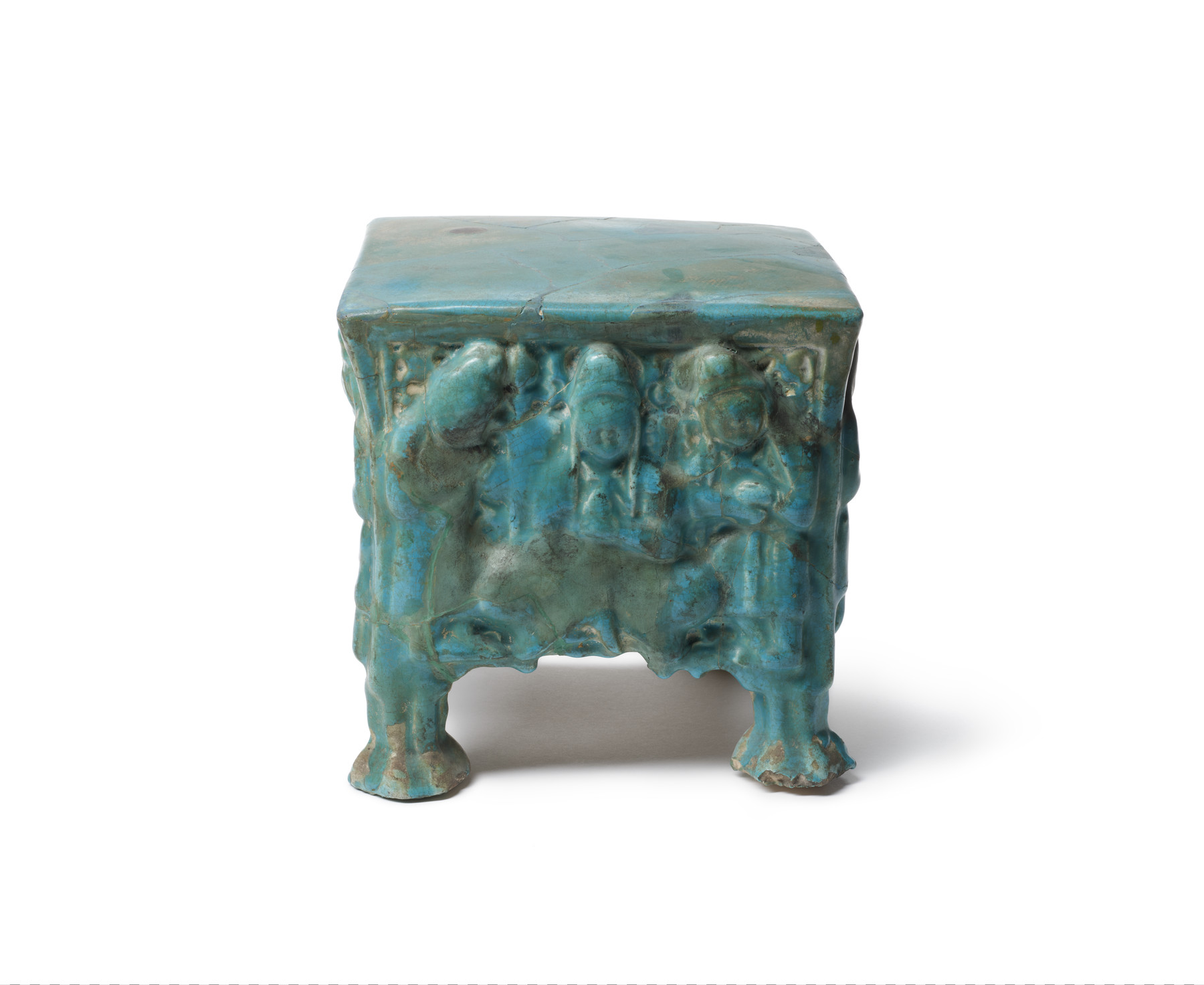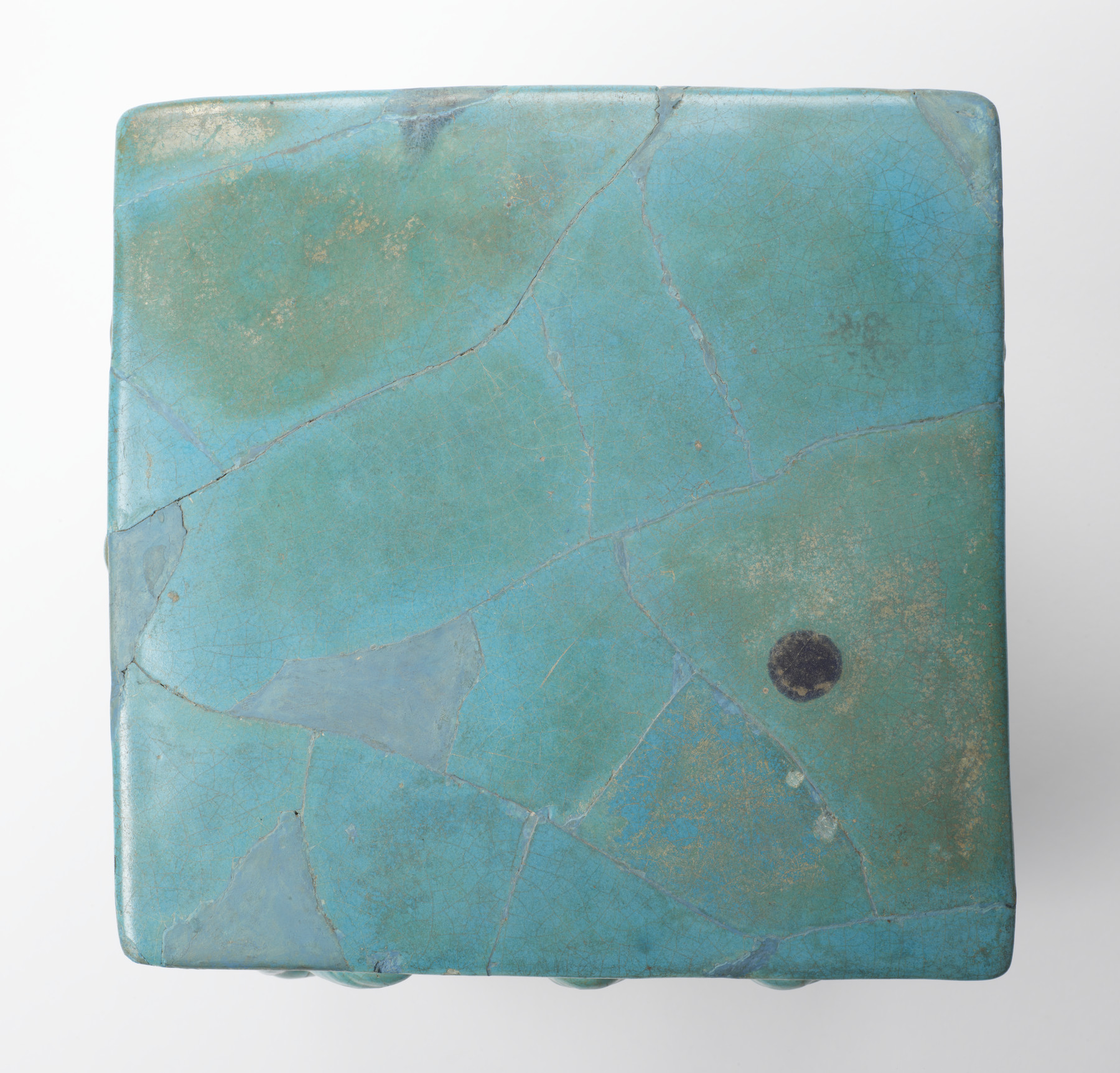Table (Tabouret) with Enthroned Prince and Courtiers
This low, four-footed table or stool has a turquoise blue glaze on most of its surface. The raised relief decoration, which was made using molds, shows a large, seated figure surrounded by smaller-scale standing figures. It is repeated on all four sides. Comparing it with other 12th- or 13th-century scenes from Iran (where this is thought to have been made) clarifies the image and indicates that the seated figure is likely a prince surrounded by members of his court. The table, which may also be called a “tabouret,” was probably used for feasts where diners would be seated on the floor or ground.
Provenance
Provenance (from the French provenir, 'to come from/forth') is the chronology of the ownership, custody, or location of a historical object. Learn more about provenance at the Walters.
Dikran Kelekian, Paris and New York, [date and mode of acquisition unknown]; Henry Walters, Baltimore, 1925, by purchase; Walters Art Museum, 1931, by bequest.
Exhibitions
| 1980 | Islamic Insights. Katonah Gallery, Katonah. |
Conservation
| Date | Description | Narrative |
|---|---|---|
| 2/26/1980 | Examination | examined for condition |
Geographies
Iran (Place of Origin)
Measurements
H: 10 × W: 10 1/4 × L: 10 1/4 in. (25.4 × 26 × 26 cm)
Credit Line
Acquired by Henry Walters
Location in Museum
Accession Number
In libraries, galleries, museums, and archives, an accession number is a unique identifier assigned to each object in the collection.
In libraries, galleries, museums, and archives, an accession number is a unique identifier assigned to each object in the collection.
48.1066












